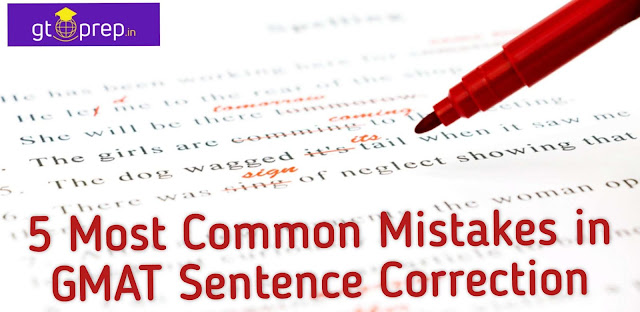While preparing for GMAT Verbal, ‘How to answer Sentence correction questions?’ is the question asked by most of the students. Here are some common mistakes by a majority of students in GMAT Sentence Correction questions.
Sentence Correction questions in the GMAT exam test your grammatical skills through punctuations, subject-verb agreement, etc. Eyeing at the ticking clock, most of the students focus less on this part, which leads to easy errors.
The most common mistakes in GMAT sentence correction questions will be
1. Subject-Verb Agreements:
GMAT Sentence correction questions will be well framed by loading more words between the main subject and the action verb. The main challenge for the aspirant will be finding the correct verb itself. And to answer the question correctly, check if the subject is plural, the verb should also agree with it. Same with the singular nouns.
[Read More: How to Score 720+ in GMAT]
2. Idiomatic Errors
The most common mistake by many students in GMAT tests is with idioms. Idioms are the expressions or phrases that have a meaning, which need not be the literal meaning. In such cases, idioms have the high talent to confuse the student while using prepositions and conjunctions.
A better way to deal with idioms is, while practicing, to make note of idioms you face every day.
3. Pronouns Errors
Pronouns for collective nouns have a big chance for errors. Because, when the noun is replaced with a pronoun, both should agree with the number and gender. As more plural nouns are present in the sentence, relating the pronoun to a proper noun will be challenging.
4. Parallelism
Parallelism for any sentence is important. When the main subject starts in a tense and the action verbs are not following the same tense, parallelism will be missed. A common trap here is the usage of phrases in between verbs can confuse the students easily.
5. Modifiers
Misplaced modifiers are one thing that seems correct, sounds correct, but incorrect. The general practice by most of the students will be they speak out the sentence, if it sounds correct, they will feel it is the correct answer. However, let me make one thing clear, it will not work always. Misplacing adverbs and adjectives can be a common mistake by most of the GMAT aspirants.
How to Overcome Sentence Correction Mistakes in GMAT:
The best ways to overcome the simple mistakes in sentence correction questions are
- Prepare Idioms flashcards
- The correct way to use adverbs and adjectives can be achieved by preparing a list of adverbs and adjectives separately. This helps in recognized the word while writing the test.
- Make a habit of reading complex sentences and understanding them
- While reading complex sentences understand how parallelism is maintained in the entire sentence.
Better practice aids in the best results. Keep practicing with intensive GMAT training to sky-rocket your score.
Check the Below GMAT Coaching Video:

Comments
Post a Comment